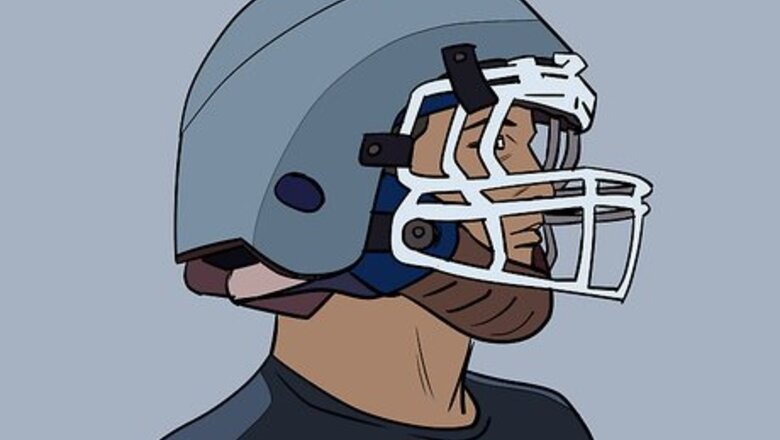
views
Protecting Against Physical Injury
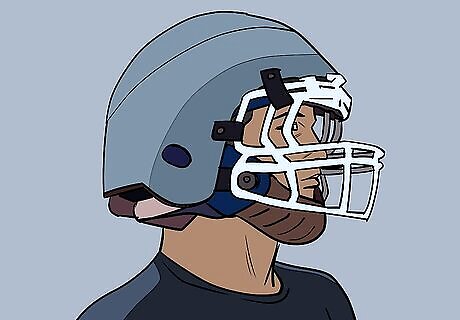
Protect your head with a helmet. Your head is perhaps the single most important part of your body to protect in a riot. Batons, rubber bullets, rocks, and fists can all cause permanent damage if they strike you in the head. Even weapons that aren't meant to be shot directly into protesters, like tear gas canisters, can (and have) caused major injuries and deaths this way. To protect against critical head injuries, wear a sturdy helmet. Rioters are known to protect themselves with: Bike helmets Motorcycle helmets Hard hats/construction helmets Sports helmets/headwear Police/military surplus helmets

Cover yourself with strong (yet mobile) clothing. Generally, you won't want to be caught in a riot in your shorts and sandals. The more skin covered, the better, as many anti-riot weapons, like pepper spray, rubber bullets, and so on, are most effective against bare skin. However, you won't necessarily want to wear clothing that's prohibitively heavy or bulky, as, often, the best defense against danger is simply to run away. Below is just one sample outfit that you might want to consider: Heavy but well-fitting jeans that you can run in. Tee-shirt or undershirt. Long-sleeved overshirt of heavy cloth or flannel. Tough jacket (sturdy leather or cloth works well. Scarf (optional)
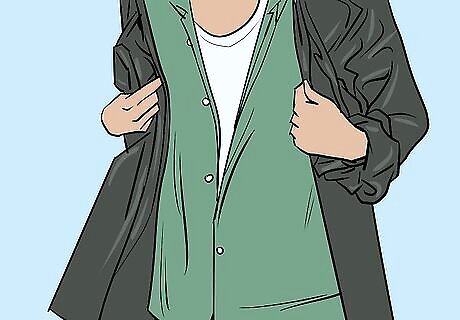
Wear easy-to-shed layers. While it's important to dress to protect yourself, you won't want to commit too heavily to the outfit you're wearing during a riot. Try to wear clothing you can easily remove if the need arises (and that you won't miss if you have to abandon it.) Being able to slip out of an outer garment quickly can have some major advantages. For instance: It can allow you to slip out of someone's grasp. It can allow you to escape noxious chemicals (like tear gas and pepper spray) that have seeped in to your clothes. It can allow you to easily "cool down" during breaks in the action when you get a chance to rest.
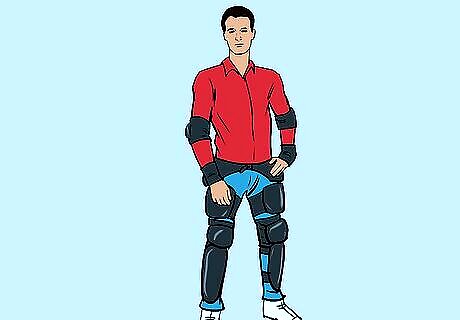
Wear sports pads to protect your limbs. If you have a chance to visit a sporting goods store, protective pads and guards can be very helpful in a riot. Though not quite as heavy-duty as the gear riot police are likely to wear, they can often prevent scrapes and bruises and may even offer limited protection against batons and rubber bullets. Commonly-available pads that you may want to consider wearing are: Shin guards (soccer/football, hockey) Knee guards (skating) Thigh/hip guards (American football) Elbow/wrist pads (skating)
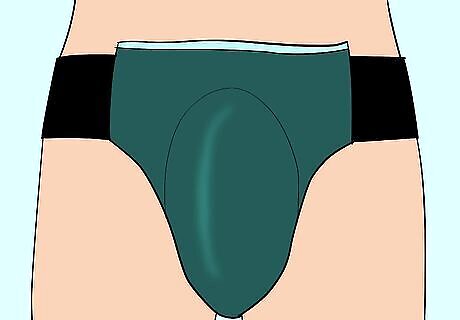
If you're male, wear a cup. For obvious reasons, it's a good idea to wear a cup to a riot if you're a man. Don't forget this seemingly minor addition to your riot gear — it can be a lifesaver.
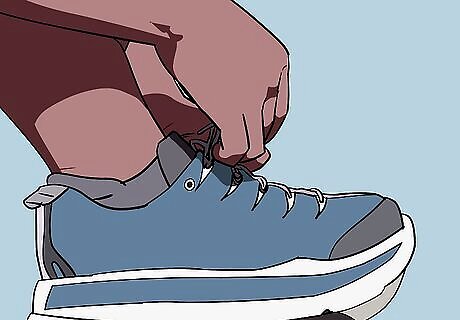
Wear shoes that allow you to run. As noted above, often, your best defense in a riot is simply to get away from sources of danger — in fact, even die-hard anarchist resources often prioritize a rioter's need to stay mobile over his ability to resist physical damage. This is much easier to do if you're wearing shoes that allow you to run at a sprint. Try to wear at least reasonably tough athletic shoes or boots that are worn-in and comfortable. Footwear with metal tops can protect against bricks, being stomped on, rocks, and other hard objects. Heavier boots (like police or military surplus options) can offer additional protection but may make it hard to run if you're not used to them.
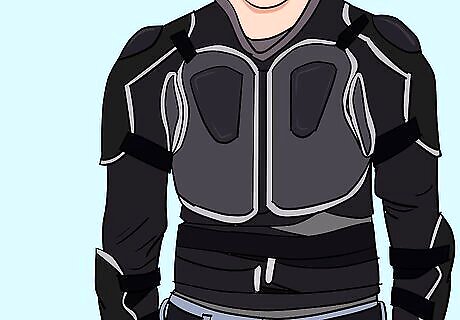
Consider wearing sheets of protective material under your clothes. If you find that it doesn't impede your ability to move, you may want to add strips or plates of hard protective material under your clothing to protect you from the hazards of rocks, rubber bullets, fists, batons, tasers, and so on. To attach these makeshift pieces of armor, stick them to the inside of your clothing with sturdy tape or string strips together with cloth to make a wearable "apron." Suitable materials may include: Sheet metal Thick, hard plastic (PVC, etc.) Tough leather Kevlar or other tough fibers
Protecting Against Chemical Attacks
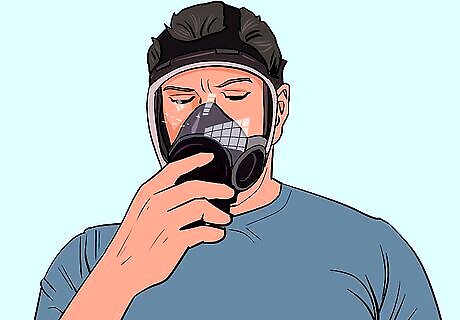
Wear a gas mask if possible. For the best odds of escaping riot-control agents (RCAs for short) unscathed, there's no beating a genuine gas mask. However, these aren't usually cheap. Decent-quality gas masks will rarely cost less than about $100-125, while replacement filters can easily cost $40-50 per pack. . Don't forget to bring at least one replacement filter canister with you. If the current canister starts to fail in the middle of a tear gas attack, you'll be glad you brought additional protection. Note that it is difficult and uncomfortable to perform actions such as running while wearing a gas mask. Note also that gas masks are subject to export restrictions in some states and countries, so check your local laws before traveling with one.
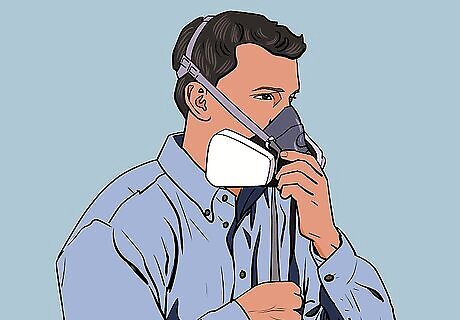
Use a builder's respirator when a gas mask isn't possible. If you can't get your hands on a gas mask, be prepared with a half-face respirator (which can usually be found at hardware stores.) Though these don't offer the full-face protection of gas masks, they should at least make it easier to breathe (and, in addition, they are usually cheaper.) Another reasonable alternative to a gas mask is a device called an "escape hood", which is essentially a plastic bag with a breathing filter used to protect from smoke inhalation when escaping a fire. These are cheaper than gas masks and aren't usually subject to the same regulations.

Use improvised mouth protections as a last resort. The drop in quality from professional-grade gas masks to lesser solutions is large. However, any sort of barrier between your face and the RCA is better than nothing. If you have nothing better handy, cover your mouth and nose with a surgical mask, a dust mask, or even a bandana. While these won't protect you from inhaling RCAs, they may at least provide some protection while you escape.

Wear eye protection (but not contacts.) If you don't have a full-face gas mask, well-fitting eye protection is a must. Almost all of the RCAs that are designed to incapacitate rioters via inhalation will also cause eye irritation, pain, and even temporary blindness. Airtight safety goggles are a good bet in terms of eye protection. These are often used in chemistry labs and are sometimes sold in college bookstores. If you can't find safety goggles, even ordinary swimming goggles can work well so long as they can keep an airtight seal.
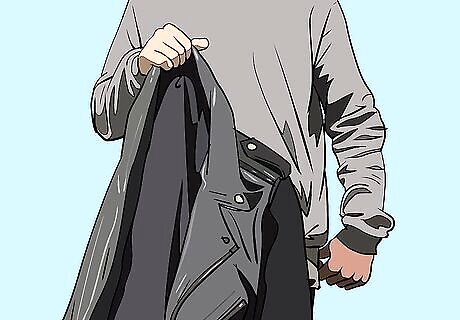
Be prepared to change clothes. Tear gas, pepper spray, and other RCAs can seep into your clothes is you're exposed to them directly. If this happens, the harmful agents will be held against your body and can cause major irritation or even chemical burns. To avoid this, shed any clothing that is exposed to an RCA as soon as you're out of danger. You may need to wash your clothes before using them again or discard them, depending on how much RCA they have been exposed to. Don't forget that a high-end gas mask won't make you invincible against RCAs, as it will do nothing to protect your clothes. Consider using hydrophobic sprays such as NeverWet to deflect liquids and gasses, as well as keep from seeping into your clothes.

Consider bringing gloves. One common tactic rioters use to fight against tear gas is to throw the canisters back at the police who shot them. However, this isn't wise to do with your bare hands, as tear gas canisters can get very hot (and, in addition, you'll be exposing your bare skin to the gas itself.) Thus, you may want to bring at least a single sturdy glove for dealing with tear gas canisters (or just limit yourself to kicking the canisters.)
Using Advanced Strategies

Make a shield. For protection beyond what you can get from sturdy clothes and makeshift armor, consider building a shield. Depending on the size, thickness, and material of your shield, it may potentially provide protection for you and others against rubber bullets, rocks, and batons (especially if used in conjunction with others' shields). Ideally, a shield should be as hard and sturdy as possible, have a U or V shape facing towards your person, and have a padded arm strap and grip handle set at a 65 degree angle to make blocking projectiles and strikes as well as supporting the shield easier. Additionally, a second handle on the middle of the shield can be added for an extra sturdy grip. This is most effective for deflecting blows from melee weapons. As a better form of deflecting projectiles, you can use a handle parallel with the ground. This handle design is used in heavier ballistic shields that are employed by the police. You also may want to add a way to see through the shield, but be cautious, as an empty hole in the shield large enough for even rubber bullets is dangerous. Try a metal mesh reinforced with lexan or plexiglass behind it. The shield should not be so large or heavy that it makes it hard to move. Get creative with the "canvas" that a broad, flat shield offers you. Some protestors involved in the 2014 unrest in Ferguson, Missouri were able to use their plywood shields as protest signs by painting the fronts of the shields with messages and slogans. Be resourceful and look for things around you that can be effective shields. Protesters involved in the 2014 anti-government riots in the Ukraine improvised heavy-duty shields made from materials like sheet metal and old iron doors. Note that lexan is expensive and you may want to opt for less expensive materials.
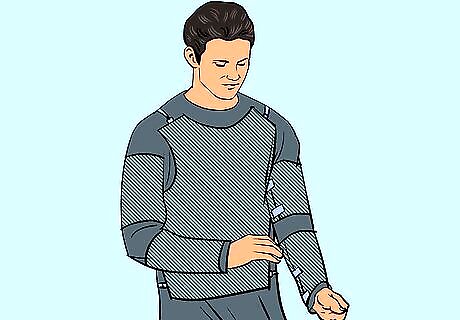
Sew or tape carbon fiber into your clothing to stop tasers. While a single shock from a high-powered taser can completely incapacitate even a large man, with the right protection, it's possible to protect yourself. Carbon fiber, a modern composite material with a wide variety of applications, has been found to stop most tasers and stun guns from harming the person on the other side of the fabric. However, since you can't simply buy a carbon fiber shirt, you'll need to add it to your clothes yourself. Carbon fiber is available commercially in a broad selection of textiles, weaves, and tapes. There are even iron-on carbon fiber sheets available, which are ideal for adding to existing clothing.
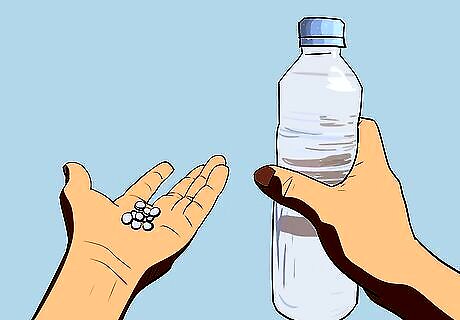
Consider making a homemade tear gas rinse. The painful, burning sensation from tear gas can be excruciating. If you or someone near you gets hit with teargas, having something ready to rinse the chemical out of your mouth, nose, and eyes can be an absolute godsend. Below are just a few anti-RCA rinses that are possible to prepare at home: Some sources state that mixing Campden tablets (which contain the active ingredient sodium metabisulphate and are used in home brewing) with water produces a solution that neutralizes tear gas. Protesters have been known to use lemon juice, milk, and other kitchen ingredients to help rinse away tear gas. However, there haven't been scientific studies to prove whether these are as effective as other solutions. When all else fails, use clean, clear water. It's been proven to be fairly effective at treating eye inflammation (especially when used generously).
Knowing What to Avoid
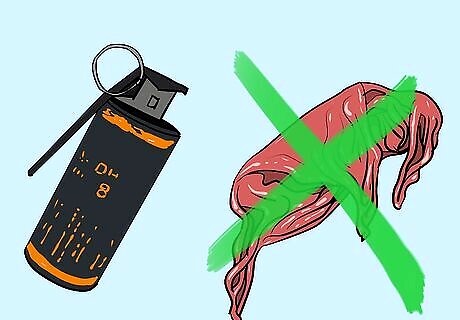
Don't rely on soaked rags or bandanas for teargas protection. One common myth is that soaking a bandana or piece of cloth in certain liquids will make it "filter" or "neutralize" the chemicals in tear gas. This is not supported by scientific evidence. Below are a few such "tricks" that you should not count on: Soaking a bandana in vinegar Soaking a bandana in water Soaking a bandana in citrus juice Rubbing a wet bandana with crushed charcoal
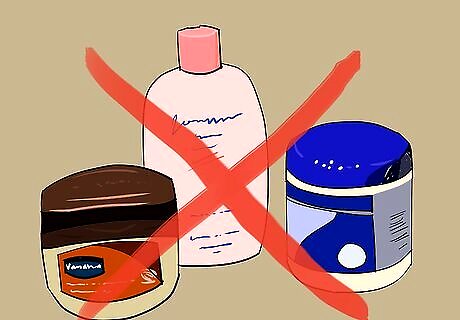
Don't wear lotions, creams, etc. Wearing oil or cream-based lotions is a bad idea in a riot. These topical products can "catch" particles of tear gas, pepper spray, and other RCAs, holding them against the skin and making it difficult to rinse them off. If you need to "clean up", instead, use a simple soap-and-water rinse.
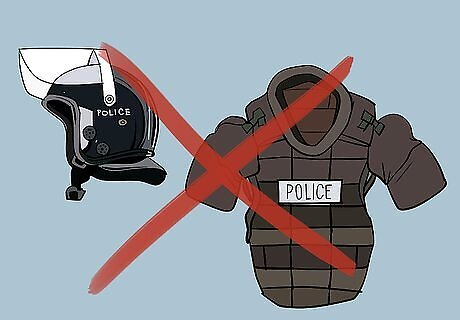
Don't wear gear that can be perceived as military/police-related. Gear that is explicitly police or military surplus can offer lots of protection, but it's often a bad idea in a riot. For instance, if it's too convincing, it may trick rioters into thinking that you're actually part of the military or police, which, depending on the conditions, can be very unsafe. On the other hand, if the police at the riot are eager to attack or arrest rioters, this sort of gear can also call unnecessary attention to yourself by being perceived as aggressive or disrespectful.
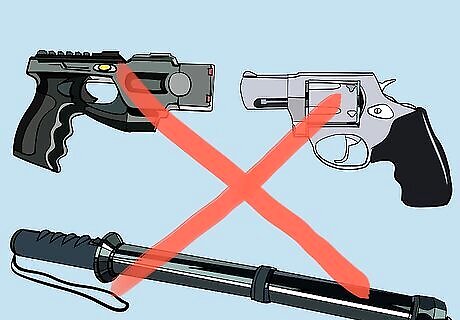
Don't bring weapons. It should go without saying, but, to be clear, it's a bad idea to arm yourself before a protest. Having a weapon makes you a prime target for the police, even if you only intend to use it to defend yourself. In martial law situations, a weapon may even be reason enough for police to target you with deadly force. In short: bringing a weapon to a riot makes things much less safe for yourself and the people around you, so don't do it.
















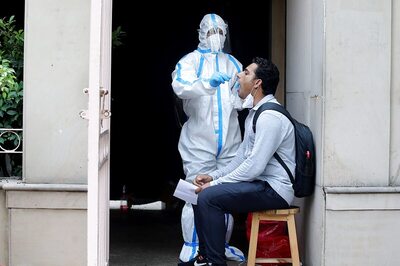

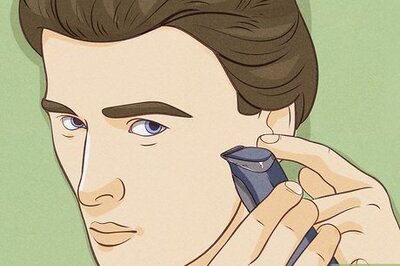
Comments
0 comment